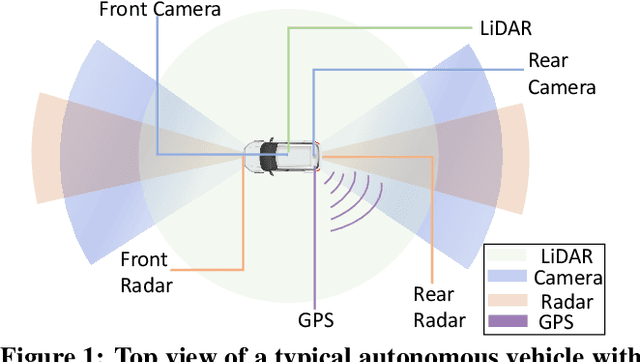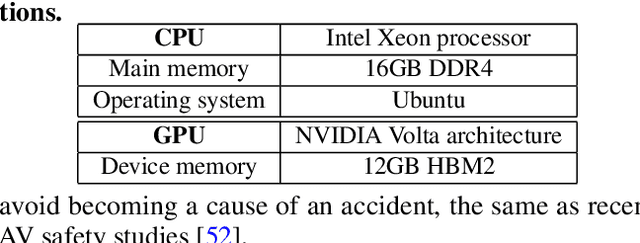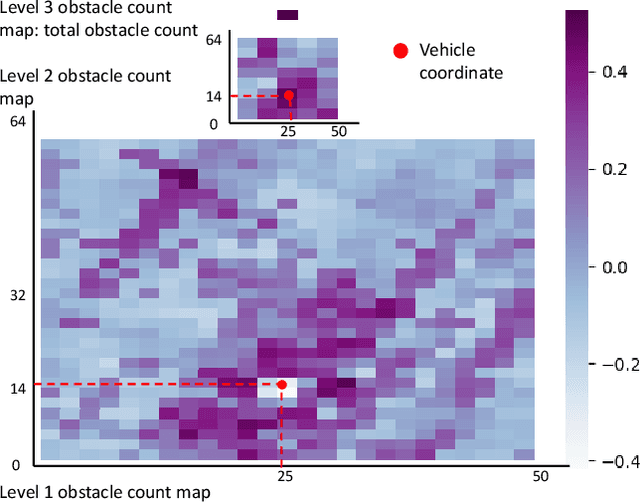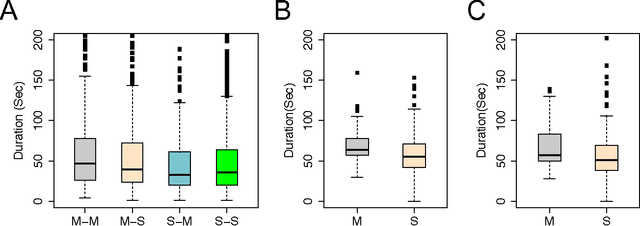Tiancheng Lou
Towards Safety-Aware Computing System Design in Autonomous Vehicles
May 22, 2019



Abstract:Recently, autonomous driving development ignited competition among car makers and technical corporations. Low-level automation cars are already commercially available. But high automated vehicles where the vehicle drives by itself without human monitoring is still at infancy. Such autonomous vehicles (AVs) rely on the computing system in the car to to interpret the environment and make driving decisions. Therefore, computing system design is essential particularly in enhancing the attainment of driving safety. However, to our knowledge, no clear guideline exists so far regarding safety-aware AV computing system and architecture design. To understand the safety requirement of AV computing system, we performed a field study by running industrial Level-4 autonomous driving fleets in various locations, road conditions, and traffic patterns. The field study indicates that traditional computing system performance metrics, such as tail latency, average latency, maximum latency, and timeout, cannot fully satisfy the safety requirement for AV computing system design. To address this issue, we propose a `safety score' as a primary metric for measuring the level of safety in AV computing system design. Furthermore, we propose a perception latency model, which helps architects estimate the safety score of given architecture and system design without physically testing them in an AV. We demonstrate the use of our safety score and latency model, by developing and evaluating a safety-aware AV computing system computation hardware resource management scheme.
Inferring Social Status and Rich Club Effects in Enterprise Communication Networks
Apr 14, 2015


Abstract:Social status, defined as the relative rank or position that an individual holds in a social hierarchy, is known to be among the most important motivating forces in social behaviors. In this paper, we consider the notion of status from the perspective of a position or title held by a person in an enterprise. We study the intersection of social status and social networks in an enterprise. We study whether enterprise communication logs can help reveal how social interactions and individual status manifest themselves in social networks. To that end, we use two enterprise datasets with three communication channels --- voice call, short message, and email --- to demonstrate the social-behavioral differences among individuals with different status. We have several interesting findings and based on these findings we also develop a model to predict social status. On the individual level, high-status individuals are more likely to be spanned as structural holes by linking to people in parts of the enterprise networks that are otherwise not well connected to one another. On the community level, the principle of homophily, social balance and clique theory generally indicate a "rich club" maintained by high-status individuals, in the sense that this community is much more connected, balanced and dense. Our model can predict social status of individuals with 93% accuracy.
* 13 pages, 4 figures
 Add to Chrome
Add to Chrome Add to Firefox
Add to Firefox Add to Edge
Add to Edge